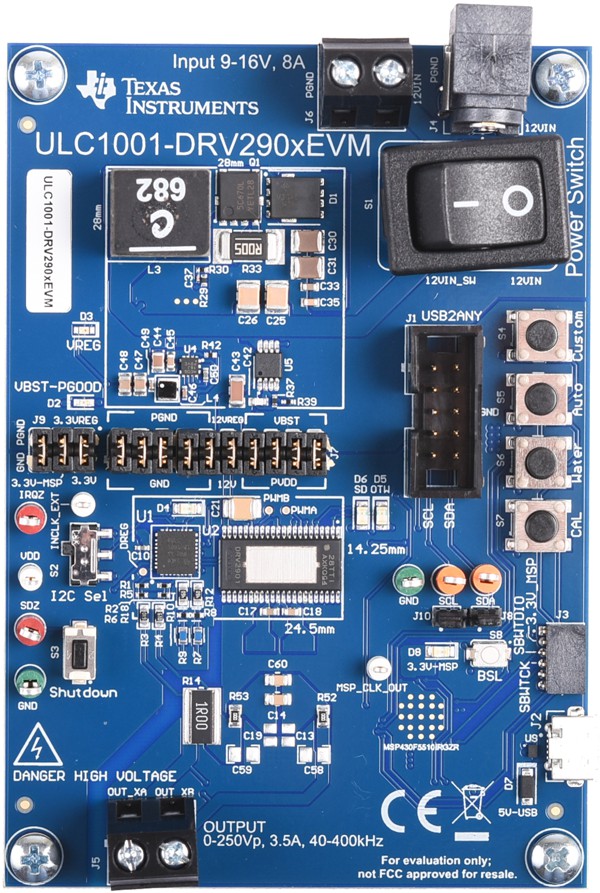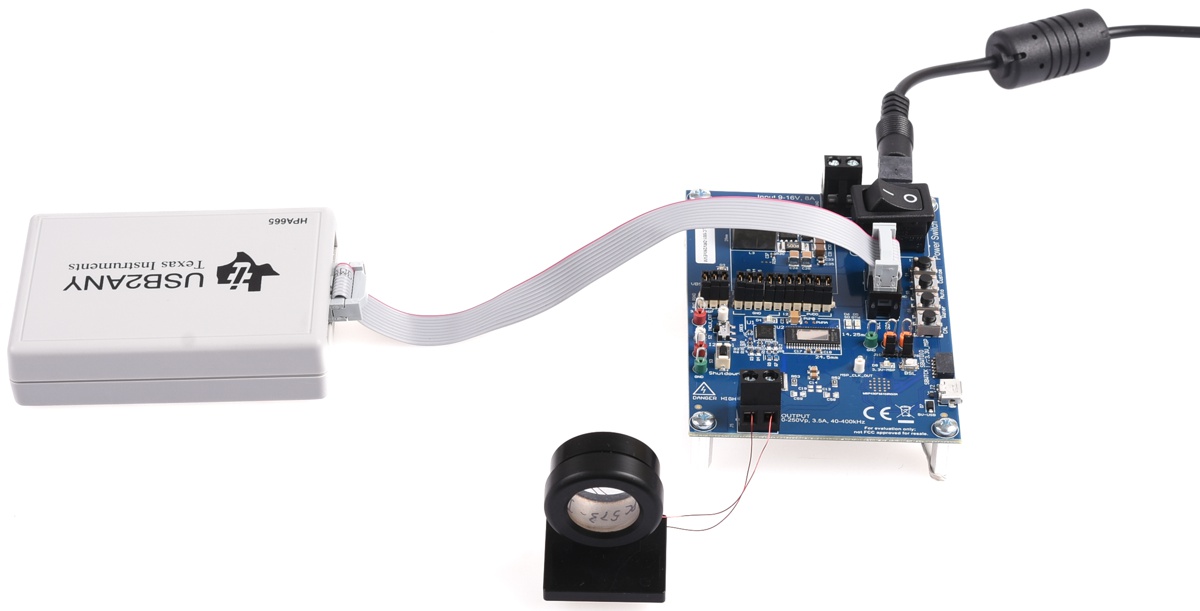SLAU880C December 2022 – May 2024 ULC1001
- 1
- Abstract
- Trademarks
- 1General Texas Instruments High Voltage Evaluation (TI HV EVM) User Safety Guidelines
- 2Introduction
- 3Getting Started
- 4System Overview
- 5GUI Overview
- 6Hardware Design Files
- 7Revision History
3.2 Connection Procedure
The ULC1001-DRV290xEVM image is shown in Figure 3-1. The entire EVM, LCS, and USB2ANY setup is shown in Figure 3-2. Follow these instructions to setup the system.
- Flip PWR switch off (off = O).
- With the power supply unplugged or off, connect to J4 or J6. Input 9V-16V, 8A. The 8A current is based on load requirements.
- Make sure the LCS or load is discharged and plug the LCS cable into the J5 terminal block. Output, 0Vp-250Vp, 3.5A, 10kHz-400 kHz.
- Connect the 10-pin I2C ribbon cable from the ULC1001-DRV290x EVM to the USB2ANY using J1.
- Connect the mini USB cable from the USB2ANY into the computer.
- Verify all safety procedures are followed before powering on the device (for example, personal protective equipment or a protective enclosure for the EVM setup).
- Turn on the power supply.
- Flip the Power Switch switch to the on position (on = I).
- Download and install the ULC1001 GUI available on TI mySecureSoftware.
CAUTION:
 |
| Do not leave EVM powered when unattended. |

Figure 3-1 ULC1001-DRV290xEVM Top View

Figure 3-2 EVM System Setup Example